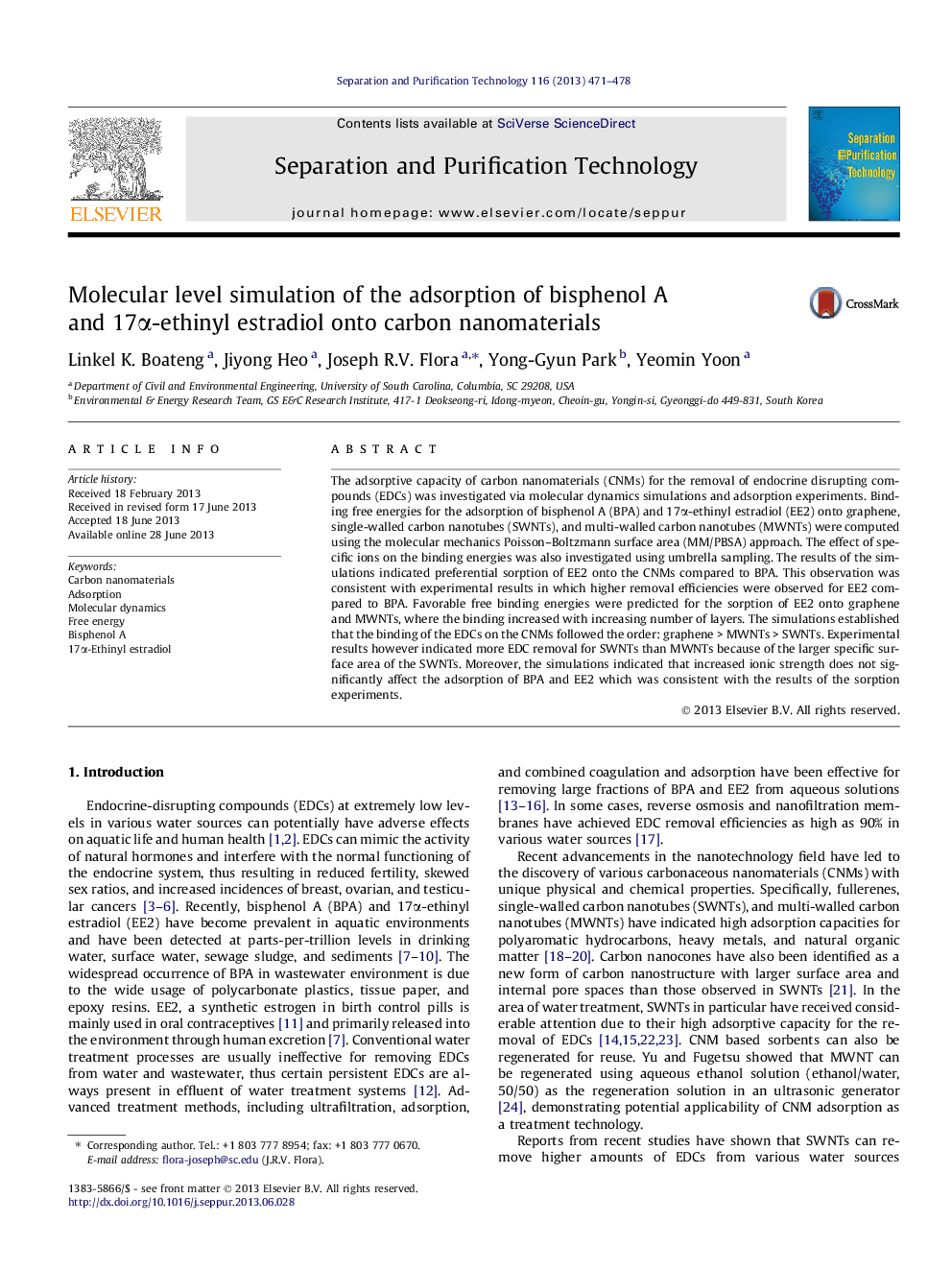| کد مقاله | کد نشریه | سال انتشار | مقاله انگلیسی | نسخه تمام متن |
|---|---|---|---|---|
| 641684 | 1457003 | 2013 | 8 صفحه PDF | دانلود رایگان |

• Adsorption of EE2 onto the CNMs was more favorable than BPA in all cases.
• Binding of EDCs to MWNT was more favorable than SWNT but SWNT had a greater adsorption capacity for the EDCs.
• Increased ionic strength did not significantly affect the adsorption of EDCs onto CNMs.
The adsorptive capacity of carbon nanomaterials (CNMs) for the removal of endocrine disrupting compounds (EDCs) was investigated via molecular dynamics simulations and adsorption experiments. Binding free energies for the adsorption of bisphenol A (BPA) and 17α-ethinyl estradiol (EE2) onto graphene, single-walled carbon nanotubes (SWNTs), and multi-walled carbon nanotubes (MWNTs) were computed using the molecular mechanics Poisson–Boltzmann surface area (MM/PBSA) approach. The effect of specific ions on the binding energies was also investigated using umbrella sampling. The results of the simulations indicated preferential sorption of EE2 onto the CNMs compared to BPA. This observation was consistent with experimental results in which higher removal efficiencies were observed for EE2 compared to BPA. Favorable free binding energies were predicted for the sorption of EE2 onto graphene and MWNTs, where the binding increased with increasing number of layers. The simulations established that the binding of the EDCs on the CNMs followed the order: graphene > MWNTs > SWNTs. Experimental results however indicated more EDC removal for SWNTs than MWNTs because of the larger specific surface area of the SWNTs. Moreover, the simulations indicated that increased ionic strength does not significantly affect the adsorption of BPA and EE2 which was consistent with the results of the sorption experiments.
Journal: Separation and Purification Technology - Volume 116, 15 September 2013, Pages 471–478